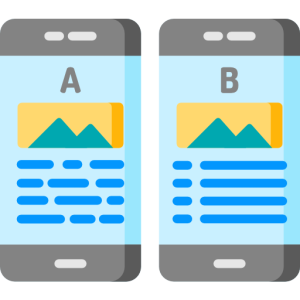Character AI New Features
The latest updates in Character AI introduce powerful features that enhance user interaction and creativity. These innovations offer more dynamic and engaging experiences, making Character AI an even more versatile tool for developers and creators. This guide explores the new features and how to use them effectively.

Enhanced Dialogue Systems
The upgraded dialogue systems in Character AI provide more natural and interactive conversations, making characters feel more lifelike.
- Contextual Understanding:
- The AI now better understands context, allowing for more nuanced responses. This feature enables characters to maintain coherent conversations over extended interactions.
- By improving contextual understanding, Character AI can keep track of past interactions and references, enhancing the continuity of dialogue. This advancement ensures characters can engage in more meaningful exchanges, increasing user satisfaction and immersion.
- Emotion Recognition:
- Characters can now detect and respond to user emotions, adapting their responses to match the emotional tone of the conversation. This capability creates a more empathetic and engaging interaction.
- By recognizing emotions, Character AI can tailor its dialogue to better fit the user’s mood, making interactions feel more personalized. This emotional intelligence adds depth to character interactions, fostering a stronger connection between users and characters.
Advanced Customization Options
The new customization options allow creators to tailor characters in more detailed and specific ways, ensuring they fit any narrative or purpose.
- Detailed Personality Settings:
- Users can now define intricate personality traits, adjusting how characters react in different scenarios. This feature provides greater control over character behavior, making them more unique and realistic.
- By offering detailed personality settings, Character AI enables creators to craft characters with distinct and consistent personalities. This customization ensures that characters behave in line with narrative expectations, enhancing the storytelling experience.
- Visual and Audio Customization:
- Enhanced tools for visual and audio customization allow for more personalized character designs. Users can modify appearance, voice, and sound effects to align with their vision.
- By expanding visual and audio customization, creators can produce characters that are visually and aurally distinct. This capability is crucial for developing a strong character identity that resonates with users and supports the story’s aesthetic.
Improved Integration Capabilities
The enhanced integration capabilities make it easier to incorporate Character AI into various platforms and applications, broadening its usability.
- Cross-Platform Compatibility:
- Character AI now supports seamless integration across multiple platforms, including mobile, web, and desktop applications. This flexibility allows developers to reach a wider audience.
- By ensuring cross-platform compatibility, Character AI maximizes its accessibility and functionality, making it a versatile tool for developers. This feature supports the creation of consistent experiences across different devices and platforms.
- API Enhancements:
- The updated API offers more robust features, allowing developers to integrate Character AI more efficiently into their existing systems. These enhancements streamline development processes and improve functionality.
- By enhancing the API, Character AI facilitates smoother integrations, enabling developers to add intelligent character interactions to their applications effortlessly. This improvement supports more complex and responsive user experiences.
Real-Time Learning and Adaptation
The latest version of Character AI includes capabilities for real-time learning and adaptation, allowing characters to evolve based on user interactions.
- Dynamic Learning Algorithms:
- Characters can now learn from interactions and adapt their behaviors over time. This feature ensures characters remain relevant and improve their responses with continued use.
- By implementing dynamic learning algorithms, Character AI allows characters to become more sophisticated and aligned with user preferences. This continuous learning process enhances the quality and engagement of interactions.
- User Feedback Integration:
- Users can provide feedback directly, which the AI uses to adjust and improve character performance. This feature makes the AI more responsive to user needs and expectations.
- By integrating user feedback, Character AI can fine-tune its responses and behaviors, leading to more satisfying user experiences. This responsiveness is key to maintaining user interest and enhancing the adaptability of characters.
The new features in Character AI significantly enhance its capabilities, providing more interactive, customizable, and adaptable experiences. With improved dialogue systems, advanced customization, better integration, and real-time learning, Character AI continues to be a leading tool for creating dynamic and engaging virtual characters. These updates empower creators to push the boundaries of storytelling and interaction, offering users more immersive and personalized experiences.




